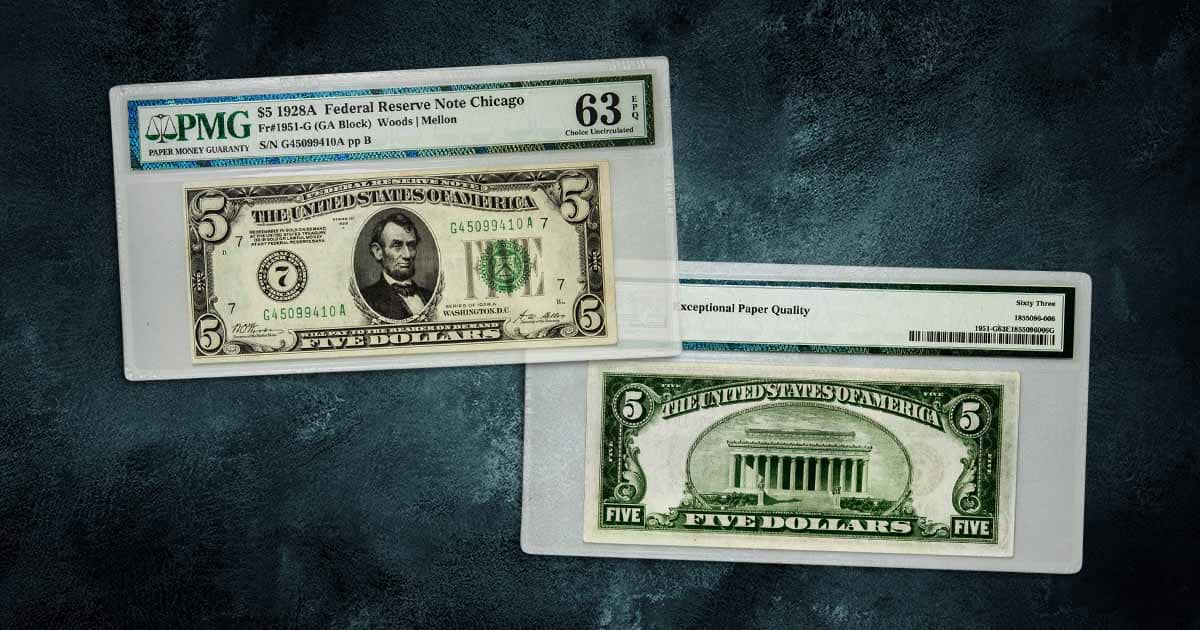
Currency collection is a fascinating hobby informed by history, artistry, and value. Determining the value of a rare dollar bill involves assessing factors, like the condition of the bill, its serial number, and unique characteristics or errors it might have.
Other factors that will inform the value of a dollar bill include its age, historic significance, as well as its relative scarcity, and market demand.
How to Preserve Your Currency Collection
Before beginning this process, it will behoove your currency collection to avoid overhandling bills.
Consider storing your currency in PVC free plastic or mylar to keep it safe from the oils on your hands, dust in the environment, and moisture in the air.
Making a digital backup of your currency will help in documenting and preserving your collection. This also gives you the option to digitally enhance an image if you spot something that merits a closer look.
Assessing the Condition of a Dollar Bill
In this step, we will go over the bill with a critical eye. Look for folds, tears, and other damage like stains, and note where these are. If you are unsure, Currency Grading 101 will help you ballpark your bill’s condition.
Investigating the Serial Number
We will be looking for a few features in assessing the serial number of a rare dollar bill:
Low Numbers
Currency with a low serial number is typically in greater demand than currency with a higher serial number. This is because the lower numbers represent how close this bill was to the beginning of the series.
Stars
Star notes have a star symbol at the end of their serial number are replacement notes for errors and misprints. Star notes are valuable because they are scarcer than other notes.
Unique Serial Numbers
Keep an eye out for unique serial numbers with sequences or patterns on dollar bills. These include ladder numbers like 1234567, radar numbers like 1234321, solid numbers like 1111111, and more.
Binary Numbers
Look for binary serial numbers that contain only two unique numbers like 2222424.
Date Notes
These are notes with a serial number that represents a date. For instance, 07041776 would represent July 4, 1776.
Looking for Errors on a Dollar Bill
This will not be a comprehensive guide to all errors that can occur with currency, but it is a great starting point.
Inverted Bill Errors
These currency errors occur when the obverse of a dollar bill is reversed. These are caused by bills being fed incorrectly to a printing press and are not common.
Plain Back Notes
Plain back notes are dollar bills missing seals, U.S. descriptors, and artwork associated from the otherwise accurate obverse of the bill. Some plain back notes only contain seals and serial numbers.
Dual Denominations
These are uncommon but easy to spot.
Alignment Errors
These are the result of a misaligned note and may exhibit seals in the wrong part of the bill or uneven borders on the note.
Printing Errors
Printing errors to watch for include folds, smears, and voids. Other noteworthy printing errors include offset printing, bleeds, and designs where the printer did not have sufficient ink.
The Bottom Line
You can search for auctions of similar dollars that have ended recently and find a ballpark range for the value of your rare dollar. It is imperative to note that not all dollars will carry the same value, as subtle differences between nearly identical notes can have a colossal impact on their value.
Using the steps above, you should get a feel for whether your bill is in good condition and exhibit features that collectors are willing to pay a premium for. If your bill is in good condition and displays some of the criteria for it to be valuable, it might be worth sending it to a grading organization.
At the end of the day, the biggest factor to consider in the value of a bill is its market demand.




